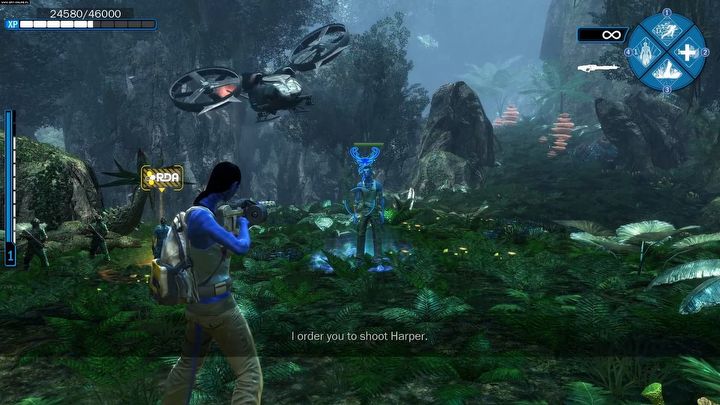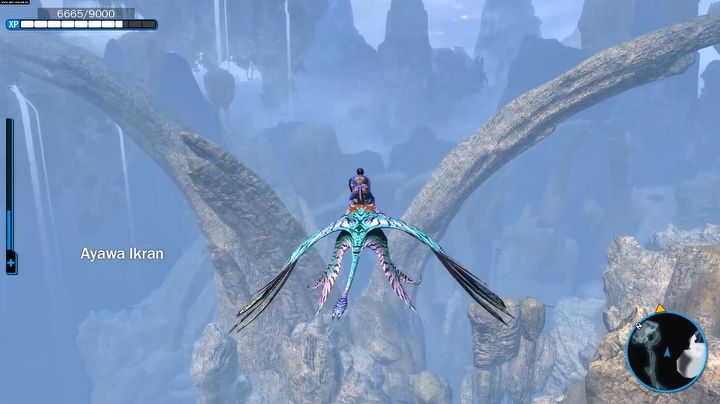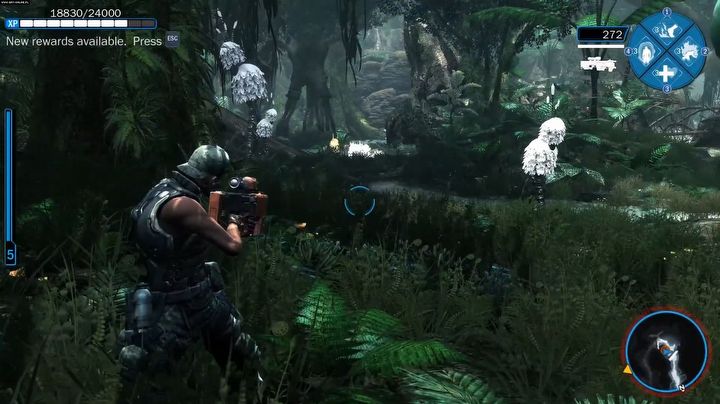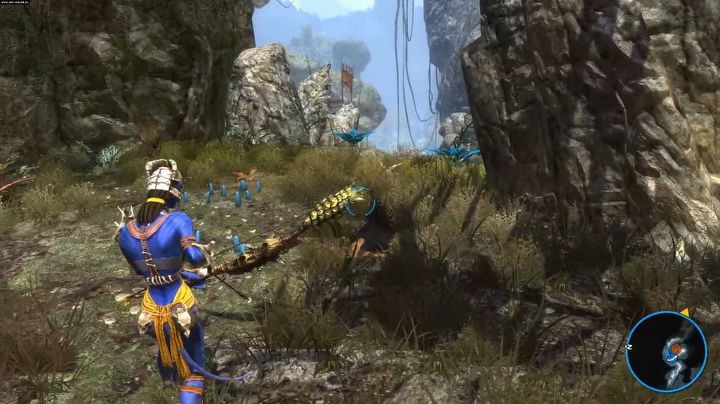14 Years Before Frontiers of Pandora, There Was Avatar: The Game
The recent release of Frontiers of Pandora is a good chance to remind about Avatar: The Game. this was the first attempt to take players into the universe created by James Cameron, and it happened 14 years ago by hands of Ubisoft. Was it any good?
We're just a little while after the release of Avatar: Frontiers of Pandora. It's a great time to recall that fourteen years ago (it's hard to believe it has been so long!) Ubisoft launched its first creation set in the universe crafted by James Cameron. Avatar: The Game evoked not only strongly mixed feelings in me, but also... a sense of remorse. Despite the drawbacks that I now notice more clearly, this game managed to captivate me, an eighteen-year-old, already quite aware player (and a movie fan), for hours.
First steps on Pandora
The game by Ubisoft Montreal was a prequel to the movie Avatar. Or it could have been, as the canonicity of the story is highly questionable, so the developers resorted to various, sometimes quite strange, solutions. The moon Pandora turned into a battleground between the Na'vi and the human colonizers, who also had access to unique clones of the natives, known as the avatars. After some fun and getting to know the specifics of playing as both a human and an avatar, this game required us to make a definitive (although not entirely) choice about which side we wanted to support.
On my first playthrough, I confidently bet on Na'vi. I was supposed to be like the movie character Jake Sully and uncover the mysteries of Pandora on my own, as well as work hard to gain the trust of the natives. I was surprised to see that my character was having exactly the same adventures as Jake Sully. Since the action of the game took place before the events of the movie, we could say that my character blazed a trail, and it was Sully who followed the path!
On my second playthrough, however, I decided to see how much fun it would be to control a human. At that moment, my conscience came to the fore, as I felt a strong sense of wrongdoing throughout the entire game. Therefore, when I was given the chance to switch to the Na'vi side at the end of the adventure, I did so at the drop of a hat. After numerous disturbances, my second character, who had been a pain in the neck for the locals, ultimately atoned for his sins and became their hero.
Toruk Makto
If you are planning to play Avatar: The Game or still have the first part of the movie Avatar to watch, don't read the contents of this frame, as you'll encounter spoilers.
Do you recall the scene from the original movie when Neytiri tells Jake about Toruk and her distant ancestor who was able to ride the animal, which enabled him to unite the divided Na'vi and earn the nickname Toruk Makto? Apparently, the girl didn't pay attention during history classes, because in the game, we are also able to fly on Toruk. If the canonicity of Avatar: The Game was confirmed, Jake Sully would have been the third, not the second, in Pandora's history to achieve this.
It's quite pretty here
Avatar: The Game, for obvious reasons, doesn't resemble the movie Avatar in terms of visuals. Nevertheless, Ubisoft developers made every effort to ensure that this title resembled the original as much as possible. So, Pandora was covered with dense vegetation, which swayed gracefully in the wind, and the ikrans and mechs moved almost as if we were watching the film. While the character animations could be criticized for appearing artificial and the colors might seem a bit dull, overall, the game had a really good presentation. Surprisingly, Avatar: The Game still looks decent two console generations later.
The sound layer also took inspiration from the film clearly – the fauna and flora produced familiar sounds and the soundtrack featured tracks that could match the picture of James Cameron.
You run, you shoot, you fight
Avatar: The Game wasn't an open-world title. The first game in Ubisoft's portfolio about Pandora included only a series of locations linked by corridors. However, the developers made an effort to create the illusion of freedom in the visited places, so there were often multiple paths leading to the destination, which usually proved quite tangled. We mostly traveled on foot, but the game frequently allowed us to seize control of various machines (as a human) or ride animals (as Na'vi, we could ride the six-legged pa'li or fly on ikran). Unfortunately, the developers created a weird balance, resulting in the local mechs having particularly weak armor and the ikrans being entirely defenseless. So, players who wanted more aerial combat had to adjust their play style. I also noticed that the game didn't have any form of tsaheylu (the biological bond that connects the Na’vi with living creatures).
When we played as an avatar, our main opponents on Pandora were humans. When we played a human, in turn, this beautiful globe reminded us that we weren't welcome there. Upon entering the jungle as newcomers from Earth, we faced attacks from both the Na’vi and predatory animals, as well as carnivorous plants.
As a local, we dealt with the threats by means of a highly effective bow, crossbows, a pathetically weak machine gun, a combat knife, or a club. The hand-to-hand combat system didn't look particularly impressive – it simply involved pressing one button and occasionally performing a special attack.
On the other hand, humans could mainly access firearms – as a third-person shooter, Avatar: The Game performed average at best. There's no cover system or the option to aim or strike the opponent. The first option mentioned would be of no use, as Avatar: The Game proved to be an extremely easy game. I only died a few times during my two playthroughs, mainly due to carelessness.
Some variety in combat was provided by special skills, taking advantage of the strengths of belonging to a particular side of the conflict. As a Na'vi, we could summon aggressive "animals" to our aid, while as a human we could, among other things, call in a raid on a specific area. We gained experience levels as we progressed and unlocked upgrades to weapons and armor, as well as new abilities. Nevertheless, we had no influence on the direction in which our protagonist would develop.
Simple game... but not quite
Although Avatar: The Game went to great lengths to prove otherwise, in practice, it was a rather simple take on the blockbuster, trying to take a bite out of the big cake that was James Cameron's creation. The plot isn't worth remembering, as it’s based on assumptions from the original. The limited locations, simplistic combat system, and simplified character development were one thing, but when looking at this game more objectively, its problems are difficult to overlook. This is evidenced by the average ratings by industry media, according to Metacritic, ranging from 59-61/100.
Nevertheless, Ubisoft's project had two or three more aces up its sleeve. The first one was the additional Conquest mode, a basic turn-based strategy, where we recruited an army and gained control over successive areas of Pandora. Conquest wouldn't have survived as a standalone game, but it worked exceptionally well as an add-on to the TPP action game. The second one was Pandorapedia, a real mine of knowledge about the entire Avatar universe. The third one is the fact that Avatar: The Game used 3D even before it became popular.
Tailor made Avatar
All this means that I wouldn't be able to put Avatar: The Game in the same row as the cheaply made movies that were still stocking shelves at that time. Although it wasn't an outstanding game, it was able to provide a fan of the original film with quite pleasant fun for about 20 hours (if the player decided to check both paths). Unfortunately, it's too late to look for Avatar: The Game on digital distribution platforms; if you want to play today, you'll need the box.
Avatar: The Game didn't fulfill the expectations of Jake Sully's fans. There are many indications that this may be the case with the upcoming Avatar: Frontiers of Pandora, which seems to have all the elements we would expect from a game in the Avatar universe. A big, open world? Hell yeah! The possible to freely roam the skies on an ikran? Hell yeah! Hiding in the bushes and quietly eliminating enemies? Check. Cooperation mode? Of course it's there! Attention to detail (tsaheylu!)? Naturally! Stunning visuals worthy of the motion-picture original? Duh! After fourteen years, the technology has finally caught up with the dream. Time will tell if Ubisoft can meet the challenge and if Avatar: Frontiers of Pandora will establish the Avatar brand in the video game industry for good.





